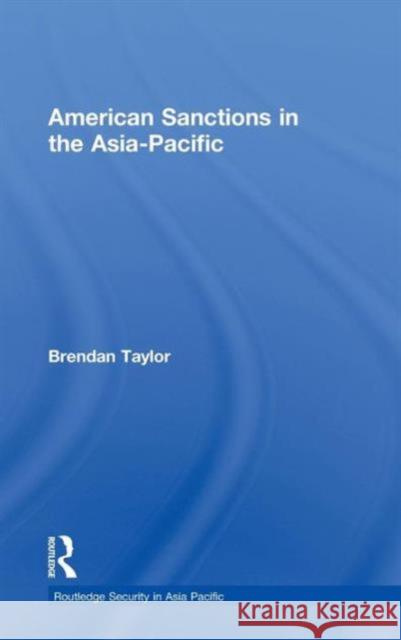American Sanctions in the Asia-Pacific » książka
American Sanctions in the Asia-Pacific
ISBN-13: 9780415423502 / Angielski / Twarda / 2009 / 182 str.
American Sanctions in the Asia-Pacific
ISBN-13: 9780415423502 / Angielski / Twarda / 2009 / 182 str.
(netto: 720,05 VAT: 5%)
Najniższa cena z 30 dni: 730,42
ok. 22 dni roboczych.
Darmowa dostawa!
Sanctions are a persistent - many would argue increasingly central - component of American efforts to shape foreign policy outcomes in the Asia-Pacific. The use of sanctions in the context of two of the most pressing regional security issues currently on Washington's radar - the ongoing North Korean nuclear crisis and the management of China's emergence - clearly reaffirms this pattern. This book provides the first comprehensive treatment of US sanctions policy in the Asia-Pacific. Using the Bill Clinton and George W. Bush presidencies as a basis for comparison, it examines nine prominent episodes involving the US use of sanctions toward countries in this economically and strategically vital part of the world. In each case it addresses the reasons why sanctions were employed in the first place, the precise nature of sanctions and how they operated in practice, before evaluating their effectiveness. Finally, it identifies common trends that emerge from this analysis and draws out practical implications for US sanctions policy, in particular when and how the US can - and cannot - optimally use sanctions in an Asia-Pacific context.
Sanctions are a persistent – many would argue increasingly central – component of American efforts to shape foreign policy outcomes in the Asia-Pacific. The threatened use of sanctions in the context of two of the most pressing regional security issues currently on Washington’s radar – the ongoing North Korean nuclear crisis and the management of China’s emergence – clearly reaffirms this pattern. This book provides a comprehensive assessment of US sanctions policy in the Asia-Pacific. It includes a series of case studies from the post-Cold War period, examining US sanctions policy toward China, Japan, North Korea, India / Pakistan, Taiwan, Indonesia and Myanmar. In each case it addresses the reasons why sanctions were employed in the first place, what expectations were generated by the process, the precise nature of sanctions and how they operated in practice, before evaluating thie effectiveness. Finally, it identifies the common trends that emerge from this analysis, and draws out policy implications for US sanctions policy, in particular when and how the US can – and cannot – optimally use sanctions in an Asia-Pacific context.











